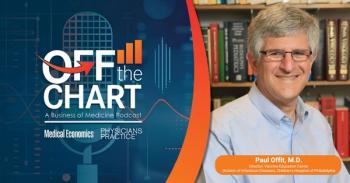
Medicare’s new payment codes could reshape primary care, but big questions remain
Key Takeaways
- New Medicare payment codes for primary care and behavioral health could significantly increase practice revenue, reducing administrative burdens.
- Barriers like documentation, capacity constraints, and patient cost-sharing may limit the adoption of new codes.
A JAMA viewpoint argues new reimbursement policies may deliver long-sought revenue to primary care, though uptake, staffing and fee cuts elsewhere cloud the outlook.
For decades now, federal and state officials have experimented with ways to bolster primary care financing, from case management fees to alternative payment models. Yet these initiatives have struggled to keep pace with the higher pay and lighter workloads offered by specialties and concierge models.
As a result, primary care has seen increased rates of
In a
Codes designed to bring money to the front lines
In January 2025,
Unlike earlier attempts, these codes avoid time-based documentation, reducing administrative burden.
In July 2025, the U.S. Centers for Medicare & Medicaid Services (CMS) proposed three add-on codes for behavioral health services. Two would support collaborative care models where primary care physicians partner with psychiatric consultants, with monthly payments as high as $145 in independent practices.
A third code would reimburse $41 to $53 per month for general behavioral health integration without psychiatric consultation.
Together, the changes could double or triple Medicare primary care revenue for certain patients. Song calculates that an independent practice with 1,000 patients on mid-level APCM services could bring in $588,000 annually, with behavioral health codes potentially adding more than $500,000.
Barriers to adoption
Historically, fewer than 10% of eligible cases have been billed under similar coordination codes, leaving significant money untapped.
Documentation, capacity constraints and patient cost-sharing obligations all contributed to the underuse.
The new codes attempt to ease paperwork but may still face barriers. Practices need resources to build behavioral health capacity, and finding psychiatric consultants could prove difficult — about half of psychiatrists do not accept insurance and many command far higher rates in private practice.
Song also notes that requiring Medicare coinsurance payments could discourage use. Larger systems with billing departments may overcome this, but independent practices may hesitate, only perpetuating disparities.
The broader context
To fund the new codes, CMS has proposed a 2.5% across-the-board cut in 2026, largely sparing primary care and behavioral health but reducing payments for procedural and specialty services. That redistribution is likely to spark resistance across the “house of medicine.”
CMS also signaled interest in shifting physician time valuations from survey-based estimates to empirical data, a change that could reduce reimbursement for outpatient procedures and modestly narrow the gap between specialty and primary care.
Necessary, but not sufficient
Song concludes that, while the proposed policies represent the most meaningful step in years to redirect resources to primary care, success is uncertain.
Corporate consolidation, looming Medicaid cuts and uneven uptake could undermine the impact.
“These fee schedule investments are necessary, although likely not sufficient, to achieve the vision of primary care for everyone,” Song writes.
Newsletter
Stay informed and empowered with Medical Economics enewsletter, delivering expert insights, financial strategies, practice management tips and technology trends — tailored for today’s physicians.














